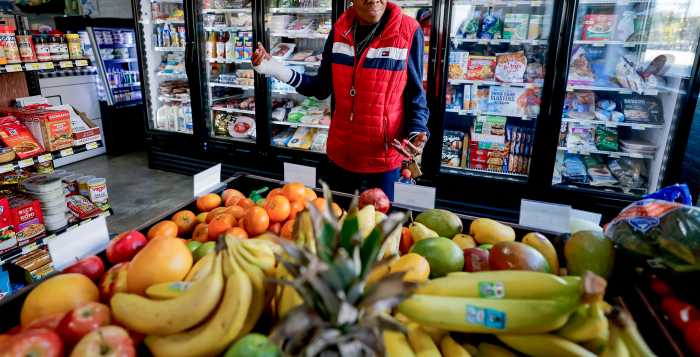A Cycle of Violence
Tremors over the Trayvon Martin shooting in Florida continue to reverberate among civil rights leaders, elected officials and minority communities. Martin was a 17-year-old black male who encountered George Zimmerman, a half-white, half Hispanic neighborhood watch man. Their confrontation resulted in the shooting death of Martin, who was unarmed and apparently walking away from Zimmerman. The facts of the case are still being investigated, and while the case against Zimmerman looks strong, he is entitled to a presumption of innocence until proven guilty in a court of law. Facts are still being uncovered, some of which may support Zimmerman. Unfortunately, it’s been grist for the media that’s intent on trial by television. Racial politics saturate the whole sorry saga and I, for one, believe that it’s a reasonable surmise that if the shooter had been black he most likely would have been arrested. I can understand the anger and resentment that Zimmerman is free. But it hardly justifies the media circus and the racial bombast that hovers over this case like a lit match being waved over an open container of gasoline. The whole messy episode has fueled outrage over what is perceived as different standards of justice.
But the story also raises the curtain upon a broader scene than this solitary and tragic incident. Statistics show that almost half of the murder victims in the United States are black, though they represent 13 percent of the population. The majority of those murdered were between the ages of 17-29, which, by the way, also represents the majority of those incarcerated in U.S. prisons. Of those blacks who are murdered each year, some 93 percent of them were murdered by other blacks. It is a cycle of violence that plagues our inner cities. When a member of the city council demanded that Ray Kelly, the longest serving police commissioner in NYC, apologize to minorities for using stop and frisk tactics in Harlem, the commissioner pulled no punches: “Ninety-six percent of shooting victims in this city are people of color and 90 percent of the murder victims are people of color,” said Kelly. “When we stop and frisk,” the commissioner continued, “whose lives do you think we are saving?” The answer, of course, is self-evident.
Yet the race card seems to trump everything; while the shameful legacy of slavery and Jim Crow putridly lingers, since those years there has been an extraordinary sea change. When Barack Obama was born in 1961, vast numbers of blacks in the American South were segregated and couldn’t vote. Now we have an African-American president. Racism in this country exists, but like rodents, it must,scamper stealthily in the shadows; they’re too great a target in the light of day. It is no longer profitable to live in the dead past when the future is so alive with possibilities.
To compare the brutal murder of Emmett Till in 1955 to the Martin case is a reckless correlation. Till was a 14-year-old African-American boy who was cold-bloodedly killed in racist Mississippi for nothing more than whistling at a white girl. It was clear the defendants were guilty as sin; but it took just 67 minutes for them to be acquitted. “If we hadn’t stopped for pop,” said one juror, “it wouldn’t have even taken that long.” Later the jurors admitted the two defendants’ guilt, but did not believe that the death penalty or life imprisonment fit the crime of white men killing a black boy. It’s an infuriating and bitter thing to reflect about the racially motivated murders that for decades occurred in the South. But that ugly slice of America no longer exists; Bull Connor and his dogs are as much history as yesterday’s weather.
If George Zimmerman is guilty, and he may well be, he should be punished to the full extent of the law. But justice rendered in the Martin case, whichever way it’s decided, does nothing to resolve the larger problems of black America. The political columnist and commentator Juan Williams, who is black and liberal, has argued that the death of Trayvon Martin should goad socially conscious people to confront not only the murder rate of black people, but drug dealers who prey on young African Americans, bad schools that produce a 50 percent dropout rate for teenage boys that in turn creates a 40 percent unemployment rate for black teens, and cable television shows that constantly offer minstrel-show images of black youth as rappers and comedians who don’t value education, dismiss marriage, and celebrate killing people, drug money and jailhouse fashion — the pants falling down because the jail guard has taken away the belt, the shoes untied because the warden removed the shoe laces, and accessories such as the drug dealer’s pit bull.
Whew! — those are strong and biting words. They can be debated — but they can’t be dismissed. Not many years ago Bill Cosby lamented about the same thing and caught hell. We’ll see what happens with Williams. What is grating about this sub-culture of violence, gangsters and drug wars is that there is a thriving black middle class in this country who live very differently from the urban poor who have been mired in intractable social pathologies. It’s no different with poor urban whites, though their percentage of the population is not as ominously high. A comparison of the two shows that it’s not race, but environment and ethos that are the most compelling factors. The components involved are complex; but turning a blind eye or deaf ear to these maladies because they’re racially charged won’t ameliorate, much less solve, these festering social conundrums.
If the unexamined life is not worth living then the same is equally true of culture and society. Felix Frankfurter may have been a brilliant jurist, but he was witless when he said that “law is concerned with external behavior and not the inner life of man.” For what more affects external behavior, good or bad, than one’s inner life? Thoughts harden into attitudes and actions are the progeny of these attitudes. In 1965, a massive power failure on the east coast occasioned no rioting. As a result, police procedure made no attempt to address the problem of riots during power failures. Fast-forward 12 years later: The demographics in New York City are largely unchanged when another power failure ignites an orgy of looting and criminality. What changed? I would argue a social welfare mentality indifferent to family structure, a conspicuous expectation of entitlement and a vocabulary of victimization, which, in challenging and unexpected circumstances, undermined lawful restraint.
These conclusions can be debated, sautéed, chewed upon and if necessary spit out. The discussion, however, cannot be ignored. Society can’t afford to have yet another generation of our urban poor at risk for violence, illiteracy, desperation, hopelessness and penury. That would be cruel and unjust; it would be irresponsible; it would be intolerable; indeed, it would be nothing less than criminal.

































